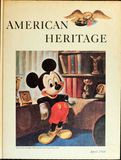
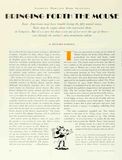
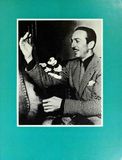
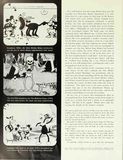
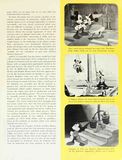
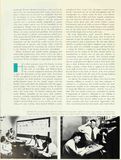
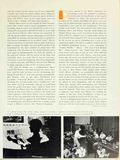
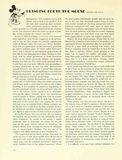
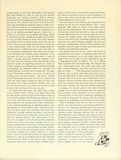
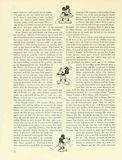
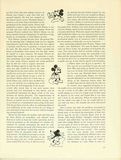
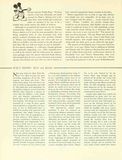
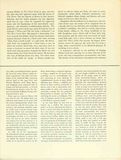
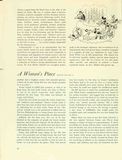
Nineteen sixty-eight was a big year for the naysayers. That spring, [Richard] Schickel published his own biography of Walt. The Disney Version: The Life, Times, Art and Commeree of Walt Disney (Simon & Schuster), a tome that William Paul, in the Village Voice in 1973, characterized as “ungenerous” and Leonard Maltin, in 1968, called “evil" and “a cruel book which is a study in propaganda,” Ironically, concurrent with the appearance of The Disney Version, in a remarkably friendly piece in American Heritage ("Bringing Forth the Mouse," April 1968). Schickel expanded upon the core facts laid out in "I Live with a Genius" and The Story of Walt Disney to produce the most extensive summation till then of Mickey’s creation. —Garry Apgar, A Mickey Mouse Reader, 2014.
Some Americans may have trouble listing the fifty united states. Some may be vague about who represents them in Congress. But it’s a sure bet that every one of us—over the age of three— can identify the nation’s most prominent rodent
He is called Mickey Sans Culotte in France, Miki Kuchi in Japan, Topolino in Italy, Musse Pigg in Sweden, and Mikel Mus in Greece. He is known to have made an English queen late for tea; to have rescued an American toy-train manufacturer from receivership; to have an emblem, an oath, a handshake, and a song of his own; to be used as a charm to ward off evil spirits among primitive African tribes; and to appear on watches, soap, radiator caps, and innumerable cereal boxes. He is, of course, Mickey Mouse.
[…]
Our article picks up Disney’s story in 1927, when the producer was twenty-six years old. After a miserable, dour childhood in Chicago, in Kansas City, and on farms in the Midwest, Walt and his brother Roy (the firm’s business manager) came to Hollywood. They set up an animation studio, which they barely managed to keep afloat with two uninspired series: Alice in Cartoonland and later Oswald the Rabbit. The future did not seem promising.
—The Editors
There are uncounted versions of the birth of Mickey Mouse, for Walter Elias Disney, and particularly his flacks and hacks, could never resist the temptation to improve upon the basic yarn. This much seems to be true: the idea to use a rodent as the principal character for a cartoon series came to Disney on a train; the year was 1927; and the train was carrying him back to California after a discouraging meeting in New York with Charles Mintz, who was the distributor of both his Oswald and his Alice series. The most flavorsome telling of the tale appeared in an English publication called The Windsor Magazine in 1934, under Disney’s own by-line, though it is doubtful that he did more than glance at the article his publicity department had prepared for him. The key section began with his boarding the train, with no new contract and no discernible future.
“But was I downhearted?” he inquired. “Not a bit! I was happy at heart. For out of the trouble and confusion stood a mocking, merry little figure. Vague and indefinite at first. But it grew and grew and grew. And finally arrived—a mouse. A romping, rollicking little mouse.
[…]